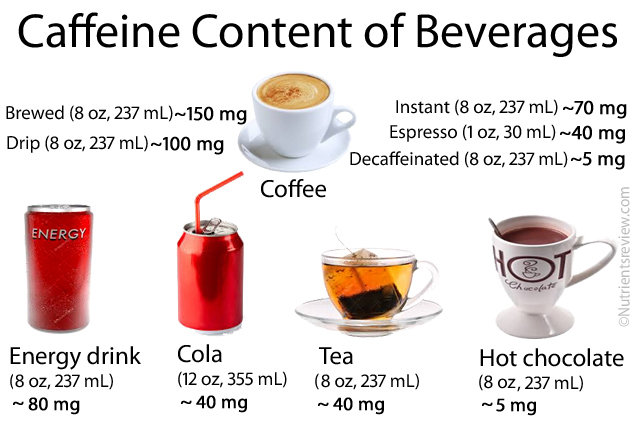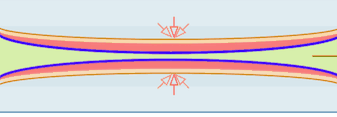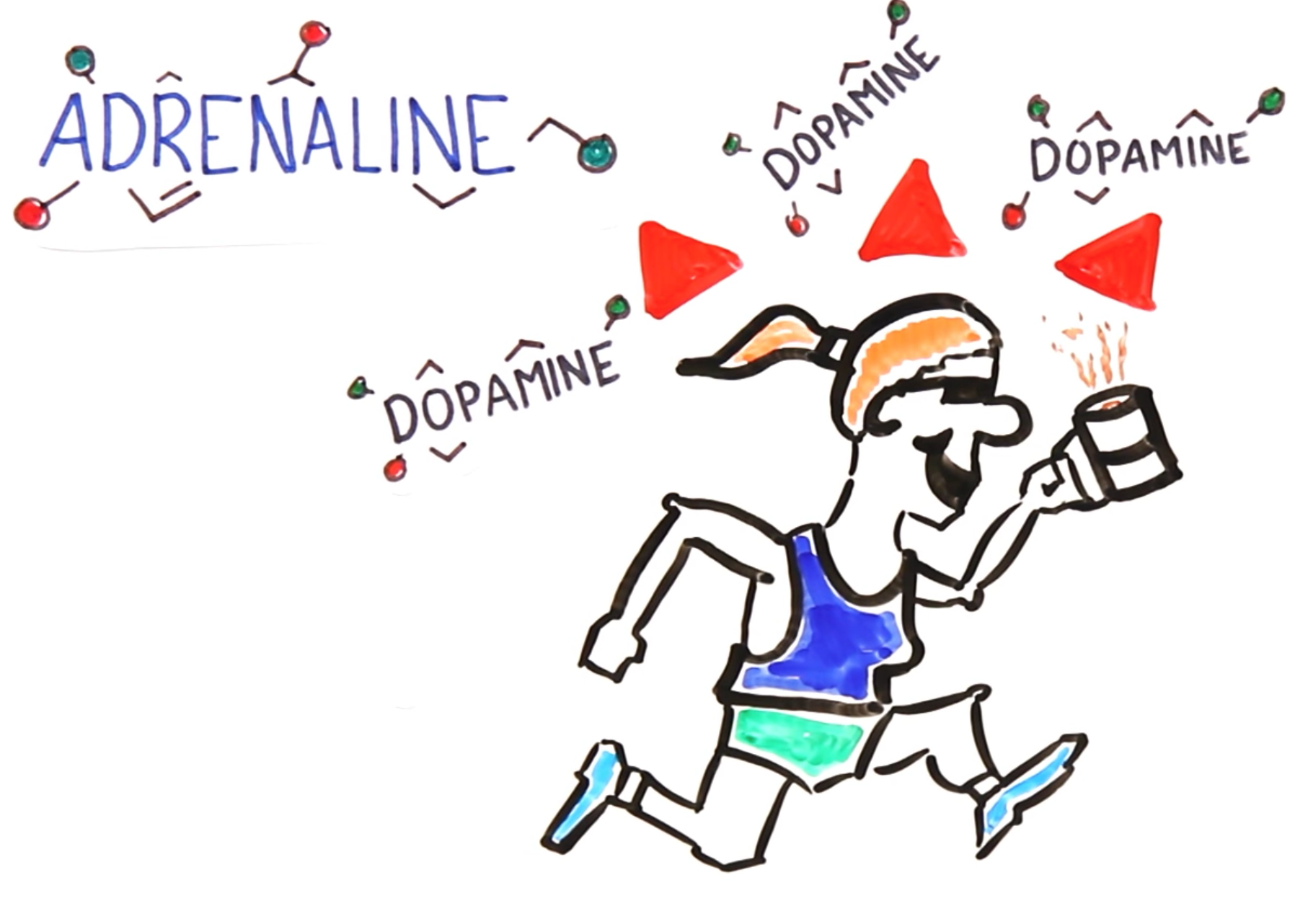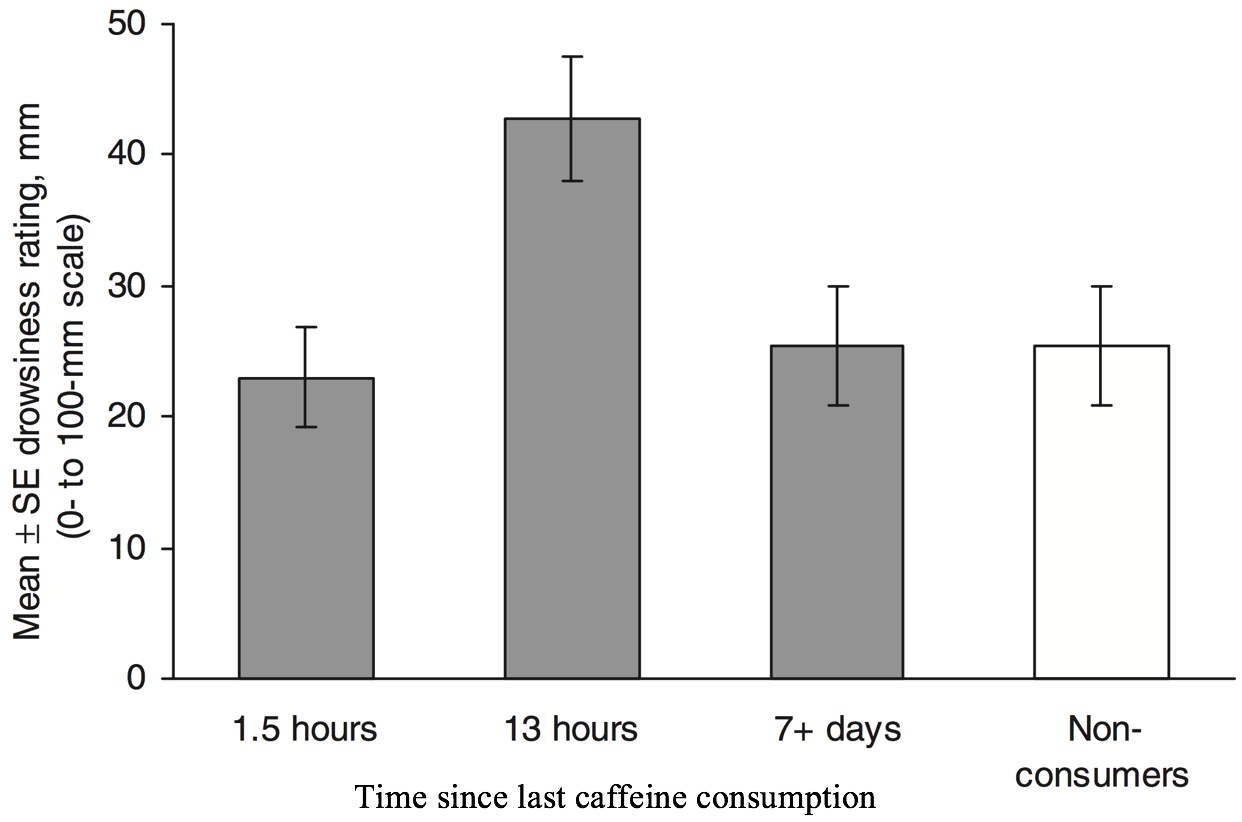Mujtaba Al-Tameemi
*Caffeine’s Mechanisms of Action and Effects on Cognitive Processing and Wakefulness
The most widely consumed central nervous system stimulant

How It Works
Adenosine
- Normally present in extracellular space in brain tissue.
- Activation of adenosine receptors by adenosine has a general inhibitory effect on neuronal activity.
- Regulates a number of physiological functions, including sleep and the level of arousal.
-
Administration of adenosine and its derivatives usually produces effects opposite to those of caffeine.
- Reduces vigilance and causes an onset of slow wave sleep.
- Depression of spontaneous electrical activity of the neurons.
- Inhibition of synaptic transmission.
- Release of neurotransmitters.


Caffeine
Adenosine
Caffeine & Adenosine
Antagonism of Adenosine Receptors

- Adenosine accumulates in the brain
- Caffeine inhibits adenosine receptors
- Caffeine increases the number of adenosine receptors
Caffeine and pregnant mice
- Chronically administered caffeine in the food of pregnant mice
- Increase in The number of adenosine receptors of the mice’s offspring lasted until adult age.

- Caffeine to juvenile rats between 4 and 27 days after birth increased the number of their adenosine receptors for just 2 weeks
Recap
- Adenosine regulates sleep
- Caffeine inhibits adenosine receptors
-
But it also increases the number of adenosine receptors
- It could have longer-lasting effects on children if the mother consumes caffeine during pregnancy.
Vasoconstriction of Cerebral Blood Vessels
- Reduces cerebral blood flow, mainly in
- Monoaminergic cell groupings
- Motor and limbic systems
- Thalamus
- At doses of 200 mg, caffeine can decrease the resting state of cerebral blood flow by as much as 20-30%

Neurotransmitters
- Adenosine inhibits release of various neurotransmitters (glutamate in particular) through presynaptic receptors
- Therefore, Caffeine can be expected to increase the release of neurotransmitters

-
Noradrenaline
- Increases in the rates of synthesis and turnover, but intracerebral concentration does not change.
- Increases spontaneous electrical activity of neurons that contain noradrenaline
Neurotransmitters - Catecholamines
-
Dopamine
- Increases in intracerebral concentration
Neurotransmitters - Serotonin
- Serotonin plays an important role in the mechanism of action of caffeine on the central nervous system
- Caffeine reduces serotonin availability at postsynaptic receptor sites
- this elicits a reduction in the sedative effect of the amine on activity
- has repercussions on sleep mechanisms, motor function, and functional regulation of cerebral blood vessels
Dose-Response
- Many studies have shown a dose-response effect.
- However, a new study shows that the level of caffeine is not an important factor in the short-term response
- Other factors might be causing the witnessed dose-response results,
- such as drink’s strength (2 cups vs. 1 cup-equivalent of tea or coffee)
- Further research is required to learn the factors and mechanisms causing these effects.
Despresso
The feeling you get when you've run out of coffee
Caffeine's Half-Life

-
The elimination half-life of caffeine in adults is between 3 and 6 hours
- shorter in smokers
- longer in pregnant women
- The withdrawal of caffeine (e.g. overnight) lowers alertness and degrades performance.
A controversial hypothesis based on recent evidence states that little or no acute benefit is gained from regular caffeine consumption due to the withdrawal effects of caffeine.
Withdrawal Reversal Hypothesis
Even though the consumption of more caffeine reverses the effects of the withdrawal, it does not boost functioning to levels that are higher than normal.
Withdrawal Reversal Hypothesis
😱
Mid-morning drowsiness in short-term and long-term withdrawn caffeine consumers and non-consumers

PSYC109W - Caffeine
By Mujtaba Al-Tameemi
PSYC109W - Caffeine
A presentation on research project done for PSYC109W class at Simon Fraser University.
- 479



